
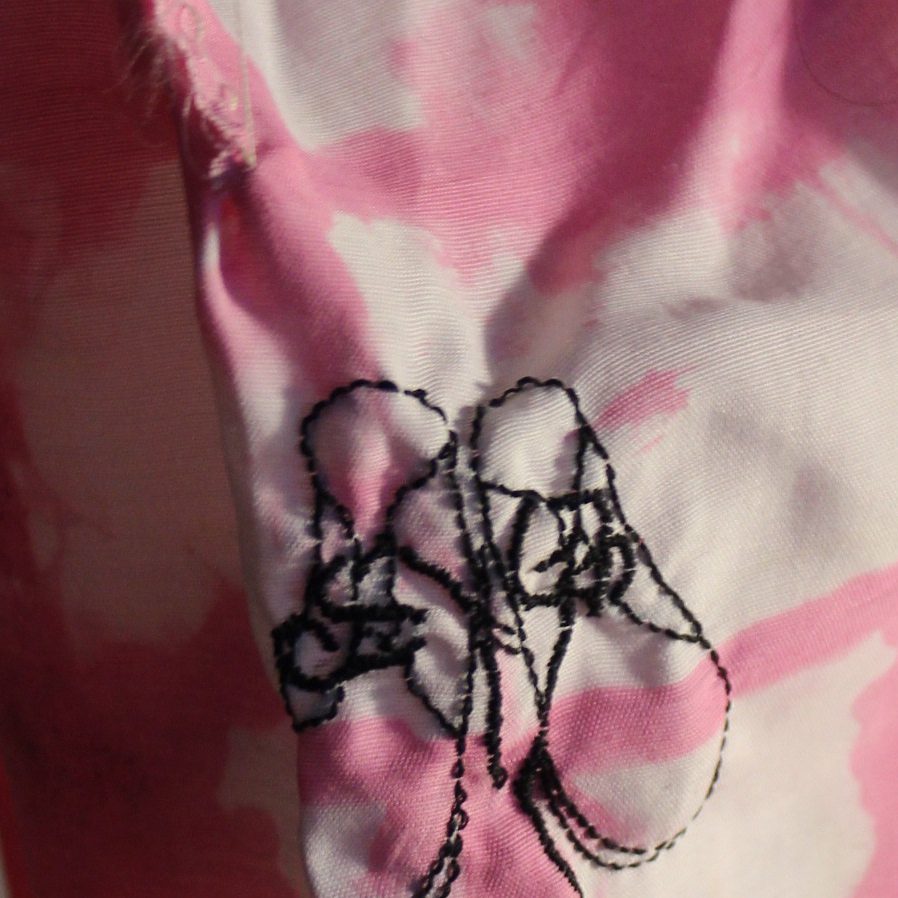
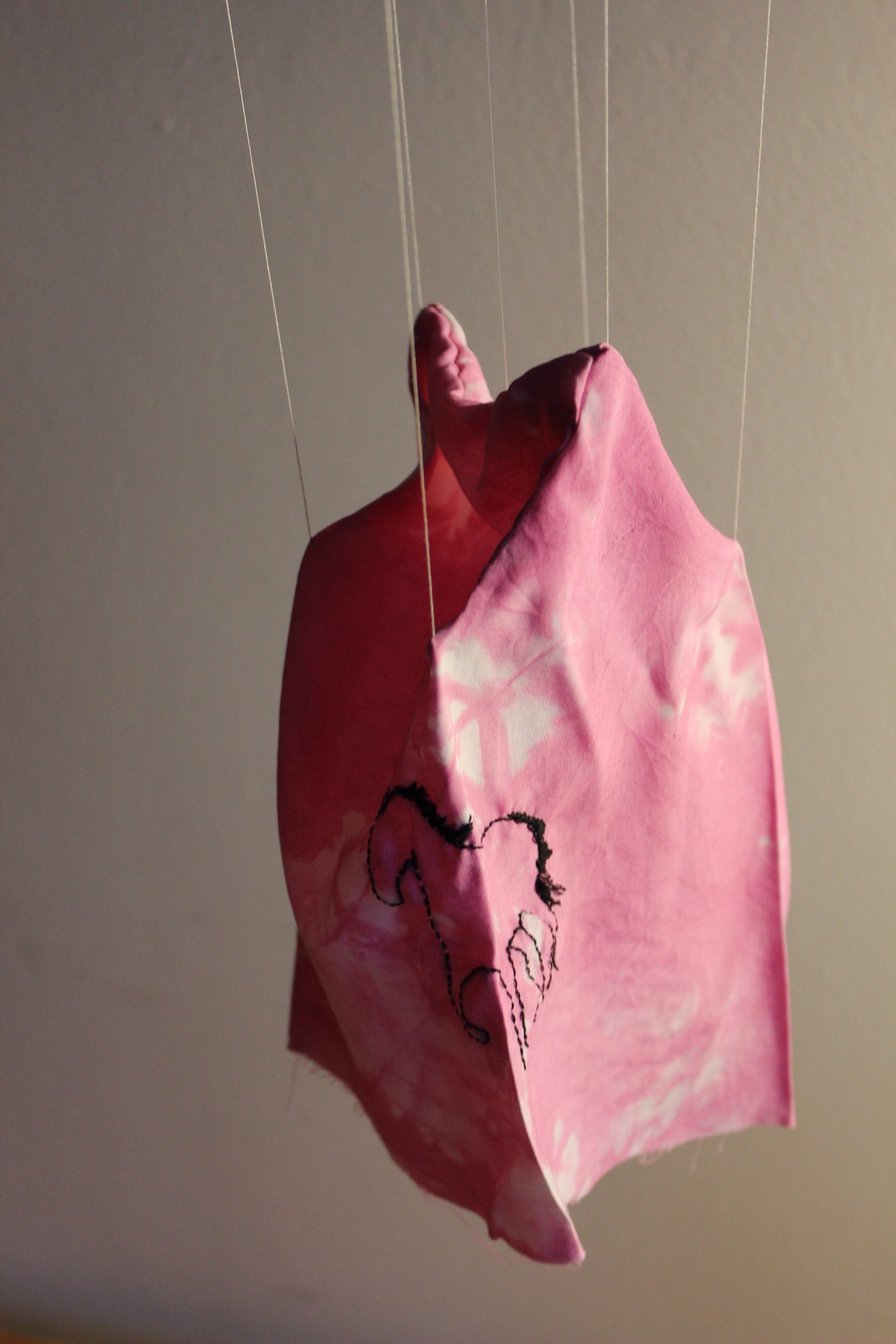
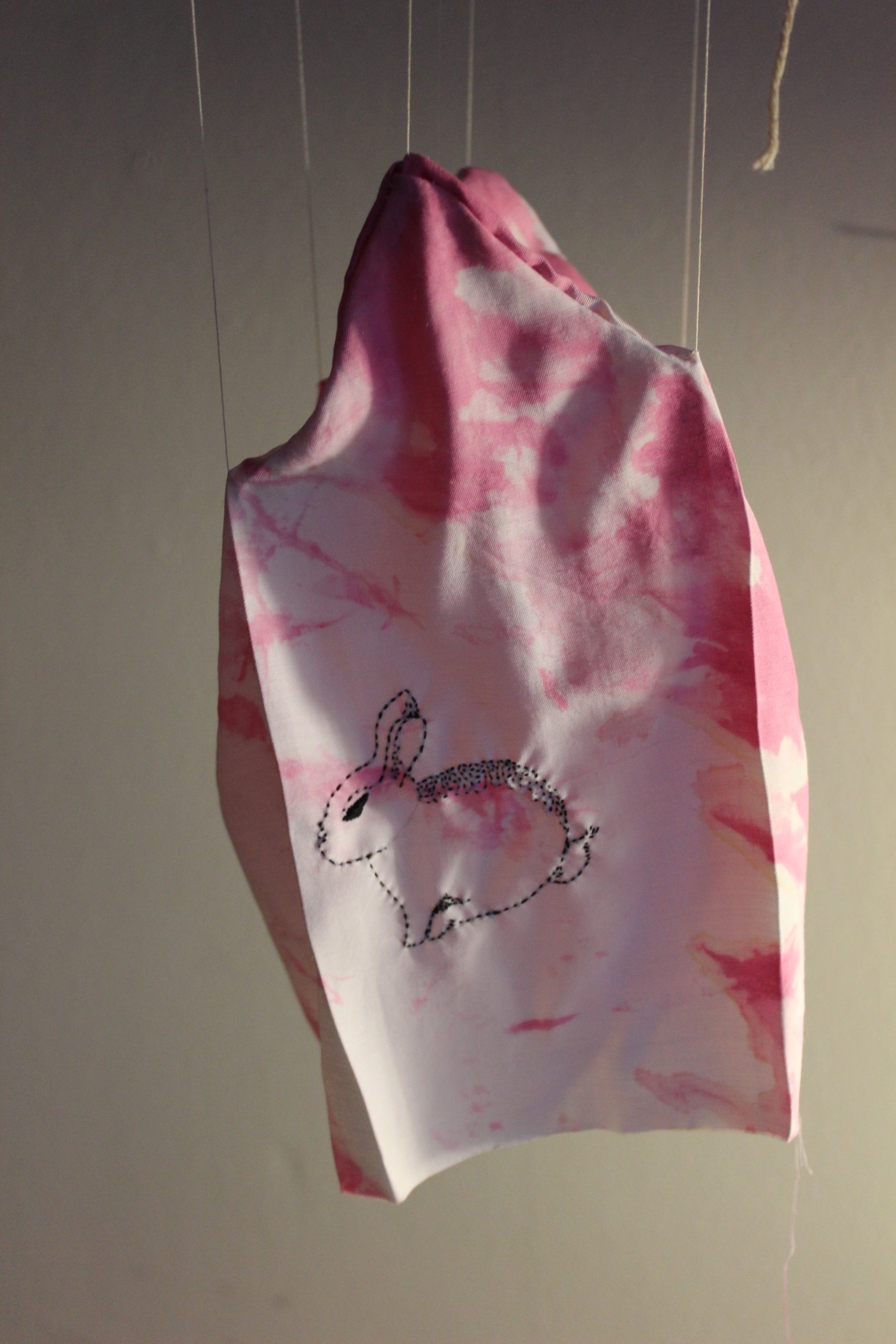
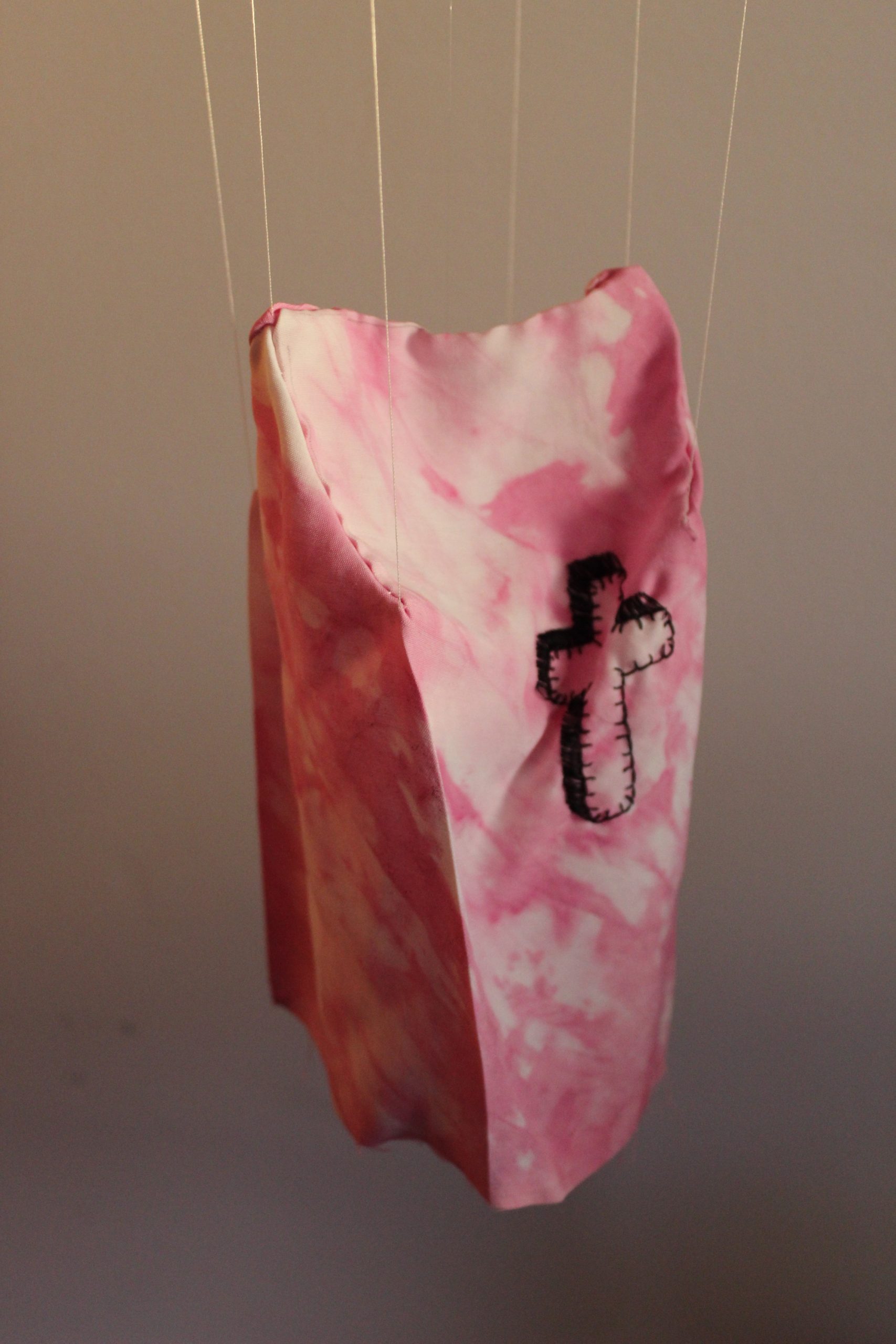
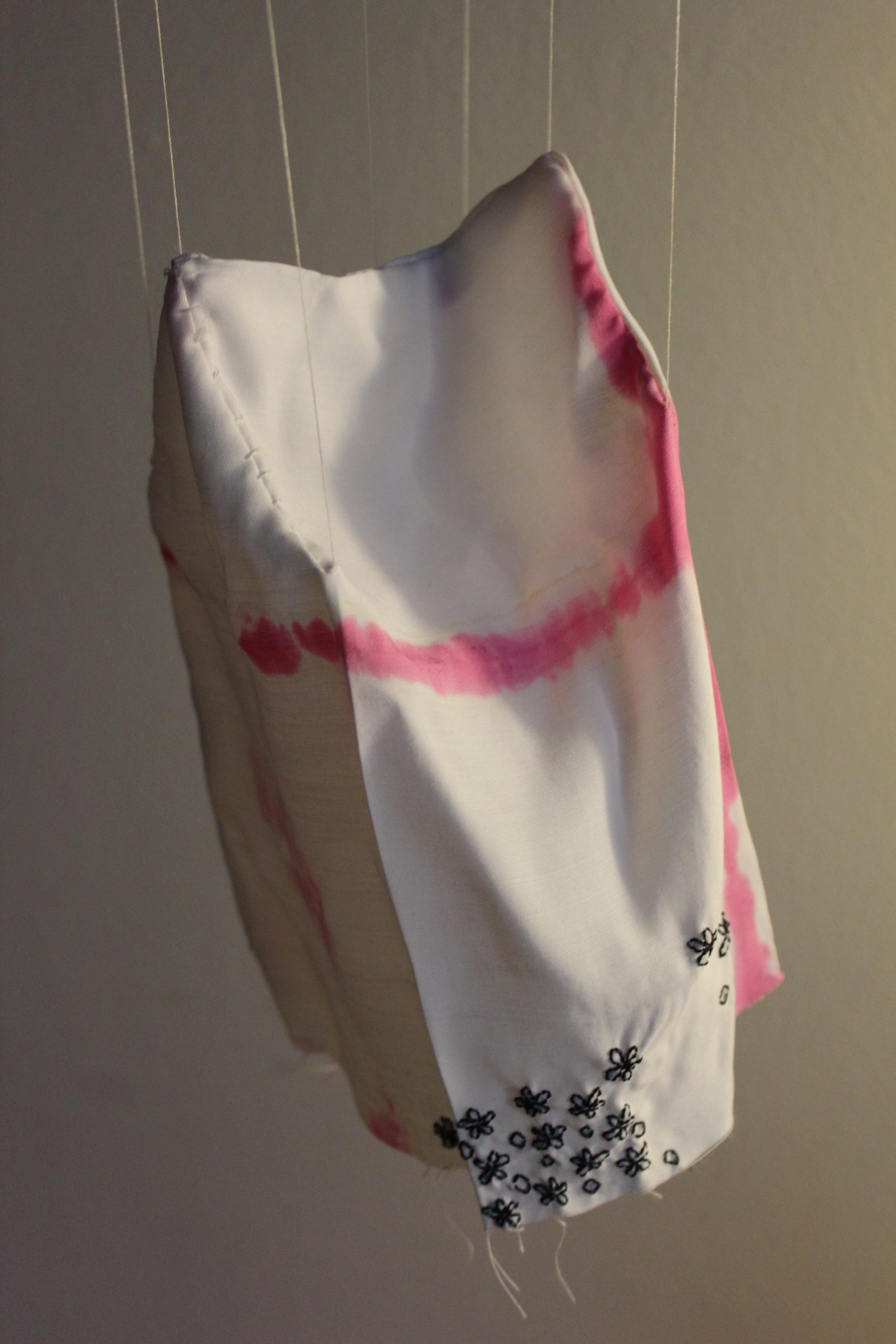
Véronique Chassé
2nd year, Art Education Major
Dwelling
3.5” x 7” x 3.5” individual house
48” x 48” x 48” installation
fabric, thread, wire, foam board and fabric dye
2016
I served as a community art educator at the St-James Drop-In Centre from September to April in downtown Montreal. At this site, and in tandem with my undergraduate program in art education at Concordia University, I worked with adult participants of different backgrounds who are marginalized members of the community, some of whom were themselves practicing artists. When facilitating art classes with vulnerable populations, art educators have to devise new strategies and sensitivities and think outside the box. And, yes, they need to come up with relevant and exciting lesson ideas too.
My unit plan for St-James focused on decorative art forms and how they can be applied to meaningful contemporary artworks. Reflecting on this teaching experience for the course outcome, I wanted to build on our work together to incorporate various materials and techniques in an installation piece that would draw in the audience. I wanted to take on the question of community building to reflect on how participants and educators can share powerful ideas, experiences and emotions to create a new space in which they all belong.
For this piece, I dyed the textile myself using spontaneous gestures to create random patterns; these served as the backdrop for meticulously embroidered images that illustrate specific experiences at St-James. In focusing on symbolic elements taken from conversations, community building and transformative moments, I intended to accentuate their importance. Throughout my practicum, I felt that the relationship building aspect of my experience took precedence over the lessons that were taught, the artworks created and all the factors we try to anticipate and plan as art educators. In my final installation, the suspended houses invite viewers to think of these matters, to spend time walking around the installation and observe the details of the embroidery and fabric dye accentuated by the lights. Each of the houses’ embroidered images represents a particular anecdote, conversation or situation experienced during my practicum.
The Shoes
The pair of shoes references a conversation I had with a member who started coming to the workshops regularly during the semester. In one of our very first conversations, he complimented my boots. This was the beginning of the relationship and the beginning of his active involvement in the workshops. Warm footwear, and access to it, can be taken for granted–his words helped me rethink the concerns at hand and gave me a glimpse of what matters for him. I don’t think it is possible to “walk in someone else’s shoes,” but drawing attention to ordinary things like footwear can help bridge understandings.
The Horse
Horses were a recurring subject of interest for many participants. During the workshops and during their independent practice in the art room, several members would depict horses and other animals as well. Discussing their interest in animals provided a useful shorthand, a way into conversation and to make the workshops accessible. Somehow, animals as subject made the project more open and fun for those who didn’t consider themselves “artsy.”
The Rabbit
In the weeks leading up to Easter, one of the regular participants drew our attention to the rabbit shape hidden in the map of the Hudson Bay. His re/vision of the map reflected for me a unique perspective and ability to use materials and techniques in imaginative ways. Although I had looked at the map numerous times, I had never noticed the rabbit shape–his playful inversion of the image highlighted for me the importance of artmaking as an interpretive act. I was reminded of just how much art educators can learn from the people they work with.
The Cross
Throughout my practicum, members have brought up some delicate issues such as discrimination, religion, mental health, and personal belief. I depicted a cross, like the one on the Mont-Royal summit, to represent religion, one of the most touchy subjects addressed. Trying to build conversation and collaboration within an eclectic group, it was essential to promote a positive dynamic and a comfortable atmosphere for all participants. While freedom of expression was always encouraged, respect for others’ beliefs, opinions and feelings within the space prevailed. The Mont-Royal cross acted as a common point of reference, as a symbol of Montreal, the city we all were living in despite our differences.
The Flowers and Diamonds
As an art educator, I tried to be as prepared and organized as possible but there would always be unexpected occurrences and disruptions. The embroidered flower design appears to be repetitive but becomes increasingly inconsistent as it spreads out. The composition of the flowers also references the inconsistencies in participation from week to week. Some weeks, the sessions were full; other times only two or three participants were present. Attendance was one of many uncontrollable factors that changed from week to week–we wondered, where our fellow artists were? Variables like these could be at times difficult, but I came to see every session of making art together as unique.